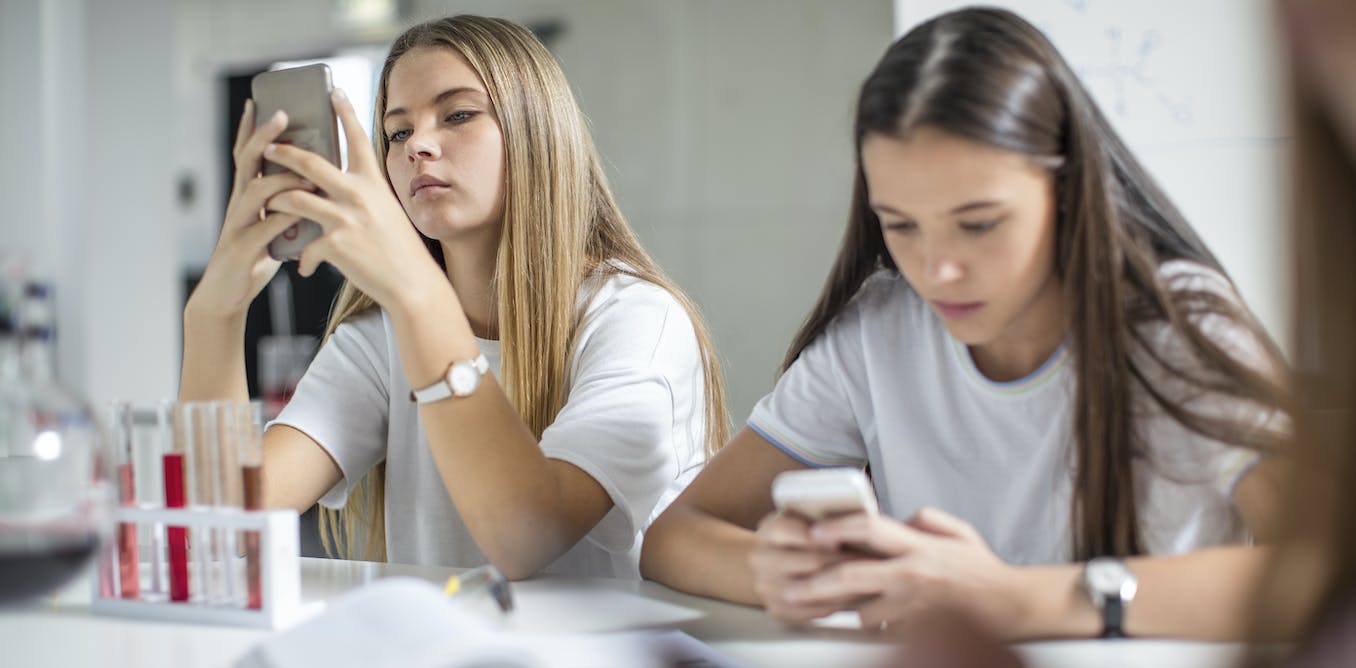The National Party’s promised ban on cellphones in schools has been touted by leader Christopher Luxon as a “common sense” and “practical” way to address New Zealand’s poor academic achievement.
And his claim that “phones are a massive disturbance and distraction” seems credible on the face of it. A recent UNESCO report found the intensive use of devices had negative impacts on student performance and increased disruption in the classroom.
App notifications throughout the day were found to be distracting students from their learning, affecting focus, recall and comprehension.
But international research suggests a blanket ban would make only a small difference to grades. A focus on phones risks shifting attention from other reasons students may be underachieving.
Do smartphones belong in classrooms? Four scholars weigh in
Misunderstanding the UNESCO report
Current interpretations of the UNESCO report, including how it is being used in the political argument, seem to focus on phones as the main source of distraction for students.
But these interpretations fail to acknowledge the broader context of the report’s findings. The report looks at smartphones as part of a wider suite of information communications technology (ICT) used during the school day, including personal laptops and tablets. These devices can also lead to distraction and lower student engagement.
The UNESCO report actually cautions against a complete device ban:
Students need to learn the risks and opportunities that come with technology, develop critical skills, and understand to live with and without technology. Shielding students from new and innovative technology can put them at a disadvantage. It is important to look at these issues with an eye on the future and be ready to adjust and adapt as the world changes.
Learning from overseas bans
Almost one in four countries have laws and policies banning smartphones in schools, most commonly in Central and South Asia.
Several Australian states have introduced bans over the past few years, with anecdotal evidence suggesting higher student engagement. Other countries, such as the Netherlands and the United Kingdom, are following suit.
A British study found banning phones is an effective low-cost policy to improve student performance. However, Swedish research aiming to replicate the British findings suggests the impact of a mobile phone ban on student achievement is negligible.
According to the Swedish research, “mobile phone bans have no impact on student performance, and we can reject even very small effects of banning mobile phones in the Swedish setting”.
The UNESCO report itself suggests a ban would be little more than a blunt approach to what is a much more complex problem.
Beyond the politics
While the evidence supporting a ban continues to be evaluated, the approach will appeal to many New Zealand parents and teachers who have concerns about children’s phone use and the impact of phones in the classroom and at home. These concerns make a ban an easy political win for National.
But schools, which operate as self-governing institutions through a board of trustees, currently implement their own policies on phone use. A blanket ban will undermine their ability to choose what is best for their community.
How smart is it to allow students to use mobile phones at school?
Decisions about a phone policy would benefit from community consultation supported by sound evidence. These consultations should involve all those with a stake in students’ learning, including the students themselves – 90% of whom have a cellphone by their first year of high school.
And we should be putting faith in our students. In my study on teenage girls and social media, students reported varying degrees of self-regulation and high self-awareness of the impact of social media on their wellbeing. They were able to enact their own boundaries to mitigate the negative effects of new technologies.
Perhaps what is needed here is an educational approach, rather than a ban. We could give young people the resources to develop the necessary critical thinking strategies and self-awareness to engage reflectively with these new technologies.
Addressing what really hurts student achievement
What remain strikingly absent from the discussion are the various other pressures causing lower student achievement, such as the ongoing impact of the pandemic on student learning.
We need to be looking at the effects of truancy and what support schools are receiving to turn this around. We also need to address what the cost-of-living crisis is doing to families and their ability to meet the basic needs of their children.
There is clearly a crisis in the education sector and these other pressures on young people’s engagement need be taken seriously. Instead of a blanket ban on cellphones in the classroom, efforts should be put towards getting children to school and keeping them there.




